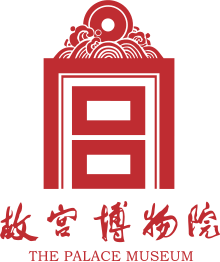故宫博物院 | |||||||||||
 | |||||||||||
 Front view of the Museum[note 1] | |||||||||||
 | |||||||||||
| Established | 10 October 1925 | ||||||||||
|---|---|---|---|---|---|---|---|---|---|---|---|
| Location | 4 Jingshan Front St, Dongcheng, Beijing | ||||||||||
| Coordinates | 39°55′01″N 116°23′27″E / 39.91694°N 116.39083°E | ||||||||||
| Type | |||||||||||
| Collection size | 1,860,000 | ||||||||||
| Visitors | 17 million (2018)[1] | ||||||||||
| Director | Wang Xudong | ||||||||||
| Public transit access | 1 at Tian'anmendong 2 8 at Qianmen | ||||||||||
| Website |
| ||||||||||
| Built | 1406–1420 | ||||||||||
| Architect | Kuai Xiang | ||||||||||
| Architectural style(s) | Chinese architecture | ||||||||||
| Chinese name | |||||||||||
| Chinese | 故宫博物院 | ||||||||||
| Literal meaning | Former-Palace Museum | ||||||||||
| |||||||||||
The Palace Museum (Chinese: 故宫博物院; pinyin: Gùgōng Bówùyùan), also known as the Beijing Palace Museum,[2][3][4] is a large national museum complex housed in the Forbidden City at the core of Beijing, China. With 720,000 square metres (180 acres), the museum inherited the imperial royal palaces from the Ming and Qing dynasties of China and opened to the public in 1925 after the last Emperor of China was evicted.
Constructed from 1406 to 1420, the museum consists of 980 buildings.[5] It is home to over 1.8 million pieces of art, mostly from the imperial collection of the Ming and Qing dynasties. The 20th century saw its expansion through new acquisitions, transfers from other museums, and new archaeological discoveries.
According to the Beijing Evening Post, the museum has seen more than 17 million visitors in 2018, making it the world's most visited museum. It has an average of 15 million visitors annually since 2012.[6][7] Due to this increased pressure, the management has set a daily limit for visitors of 80,000 since 2015 to protect the structure and the experience.[8]
Cite error: There are <ref group=note> tags on this page, but the references will not show without a {{reflist|group=note}} template (see the help page).
- ^ Du, Juan (December 17, 2018). "Palace Museum sees record number of visitors". China Daily. Retrieved May 24, 2019.
- ^ "China's Forbidden City admits plans for 'rich club'". BBC News. 2011-05-17. Retrieved 2024-11-10.
- ^ Gilani, Fazal (2022-02-24). "Digitalizing Gandhara Art, Exhibition at the Palace Museum in Beijing in 2022". Gwadar Pro. Retrieved 2024-11-10 – via China Economic Net.
- ^ "Bringing the Palace Museum's treasures to life". Hong Kong Baptist University. 28 Jul 2022. Retrieved 2024-11-10.
- ^ 故宫到底有多少间房 [How many rooms in the Forbidden City]. Singtao Net (in Simplified Chinese). 27 September 2006. Archived from the original on 18 July 2007. Retrieved 2007-07-05.
- ^ "Visitors to Beijing Palace Museum Topped 16 Million in 2016, An Average of 40,000 Every Day". thebeijinger.com. 3 January 2017.
- ^ Bi (毕), Nan (楠). "Beijing's Forbidden City ranks most visited museum in the world – Chinadaily.com.cn". hinadaily.com.cn. Retrieved 2019-06-04.
- ^ "Forbidden City becomes world's most visited museum". gbtimes.com. Archived from the original on 2019-06-04. Retrieved 2019-06-04.